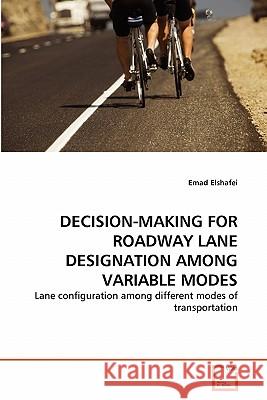Decision-Making for Roadway Lane Designation Among Variable Modes » książka
Decision-Making for Roadway Lane Designation Among Variable Modes
ISBN-13: 9783639268386 / Angielski / Miękka / 2010 / 232 str.
Decision-Making for Roadway Lane Designation Among Variable Modes
ISBN-13: 9783639268386 / Angielski / Miękka / 2010 / 232 str.
(netto: 337,33 VAT: 5%)
Najniższa cena z 30 dni: 354,20 zł
ok. 10-14 dni roboczych
Bez gwarancji dostawy przed świętami
Darmowa dostawa!
Increasing travel demand and a shortage of funds available to build new roads are forcing the transportation infrastructure to function at its maximum capacity. The available road space is typically partitioned according to a variety of modes: exclusive lanes for bicycles, buses, parking lanes, etc. The questions in this research are: did road changes lead to the most efficient road allocation for the various transportation modes vying for it? Is it possible to do a better job than what currently exists? Would traffic flow increase, road efficiency improve and congestion be reduced? How should two different alternatives of road space allocation be compared? The approach in this study consists of investigating what relationship exists between the lane-use allocation on one hand and the traffic flow, traffic speed, environmental impact, safety impact, mobility, and accessibility on the other hand. The research provides a unique application for a multi- modal analysis and a decision-making method and contributes to the transportation community efforts to improve corridor and network efficiency.











